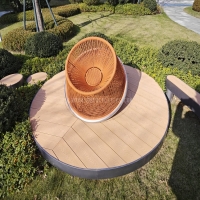Welcome to the website for landscape facilities products and knowledge.
Are there any cultural considerations in the bin’s design for global markets?
When designing bins for global markets, cultural considerations play a pivotal role in ensuring both functionality and user acceptance. Different regions have unique waste disposal habits, aesthetic preferences, and even symbolic associations with colors and shapes. For instance, in some Asian cultures, bins with minimalist designs and neutral colors are preferred, while European markets may favor bold, eco-friendly designs.
Size and capacity also vary based on local waste generation patterns. Urban areas with high-density populations might require larger bins, whereas rural regions could prioritize smaller, more portable options. Additionally, religious or superstitious beliefs can influence design choices—certain colors or symbols may be avoided to prevent cultural offense.
Material selection is another critical factor. In environmentally conscious markets, biodegradable or recycled materials are highly valued, while durability might take precedence in regions with harsh weather conditions. Labels and instructions must also be localized, considering language and literacy levels to ensure proper use.
By integrating these cultural nuances, manufacturers can create bins that are not only practical but also resonate with local consumers, fostering better waste management practices worldwide.
Related search:

Recommendation
Swivel chair-Specialty steel structure woven rattan leisure chair with rotatable design